On March 8, 2014, Malaysia Airlines Flight 370 vanished. The crash site was never found, nor was the plane. It remains one of the most perplexing aviation mysteries in history. In the years since the crash, investigators have looked into everything from ocean currents to obscure radio phenomena to try and locate the plane. All have thus far failed to find the wreckage.
It was on July 2015 when a flaperon from the aircraft washed up on Réunion Island. It was the first piece of wreckage found, and it was hoped it could provide clues to the airliner’s final resting place. While it’s yet to reveal a final answer as to the aircraft’s fate, some of the ocean life living on it could help investigators need to find the plane. The picture is murky right now, but in an investigation where details are scarce, every little clue helps.
Barnacles
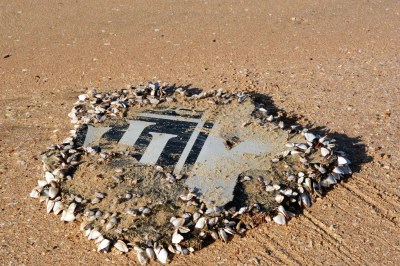
Today, there’s a general consensus that MH370 probably went down somewhere in the Indian Ocean. That’s supported both by analysis of satellite pings and the wreckage which washed up at Réunion. Notable on the wreckage was a small population of barnacles of the species Lepas anatifera.
David Griffin, an Australian government scientist, expressed optimism that these barnacles could help pinpoint the crash site. Similarly, American scientist Gregory Herbert thought much the same thing. Akin to the rings of a tree, the shells of the barnacle can reveal a history of the organism. By analyzing the found barnacles against their typical life cycle, they could potentially reveal details about where the wreckage had been.
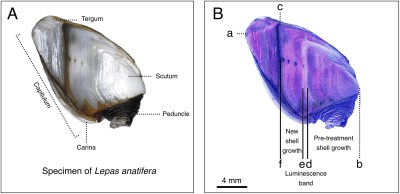
A great deal of research was undertaken to learn more about the species in the hope that better understanding the barnacles could help find the plane. As a species, Lepas anatifera proved to be uniquely perfect for further analysis. These barnacles tend to attach to floating debris, such as that generated by a catastrophic plane crash. Under stable conditions, the barnacles tend to grow at a fairly consistent rate. By looking at the oldest barnacles on the debris, one could try and estimate the length of time it had been in the water. Combining this with models of ocean currents could help figure out where a piece of debris might have come from.
Unfortunately, the innate variability of the sea organisms frustrated easy analysis. By growing their own barnacles in different conditions, researchers soon found that varying sea temperatures had a significant impact on growth size. As did the amount of nutrients available for the barnacles to feed on. Some researchers found that their barnacles maxed out at 20 mm in length after three months, while others grew barnacles over twice as long in a third of the time.
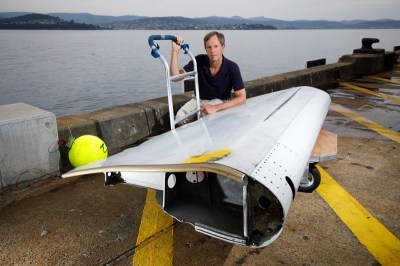
After much analysis and comparison of barnacle studies, initial optimism was dampened by the reality of the evidence. The largest barnacles on the flaperon suggested it had been floating for about four months — far less than the 16 months between the aircraft’s disappearance and the flaperon’s discovery. Indeed, similar results were found for other debris recovered since then, too. “Unfortunately for crash investigators, the new, faster Lepas growth rates suggest that the large (36 mm) Lepas found on the missing Malaysian Airline flight MH370 wreckage at Reunion Island – 16 months after the aircraft was believed to have crashed in 2014 – were much younger than previously realised,” said Iain Suthers, a researcher with the University of New South Wales who worked on barnacle studies.
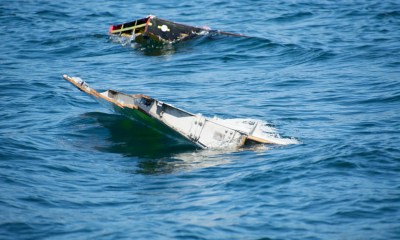
Other mysteries have presented baffling inconsistencies, too. When French researchers floated the flaperon in a tank to determine how it floated, they found one edge would consistently stick out of the water. This would be all well and good, except this surface was found covered in barnacles, too. This should have been impossible, as the barnacles cannot grow under these conditions.
There are still hopes that barnacle analysis could provide new areas for authorities to search for the plane. In concert with his research team, Herbert published a paper late last year positing a new drift path for the flaperon, based on barnacle studies. The paper lays out a deep analysis of a barnacle shell found on the MH370 flaperon debris. The shell’s makeup was used to determine the sea temperatures at different stages of the barnacle’s growth, based on established research into Lepas anatifera. This was then used to generate a reconstruction of the barnacle’s potential drift path through the ocean before it wound up on Réunion Island. The team hoped to repeat their analysis with larger barnacles from the flaperon debris, if they were to be released for analysis by French authorities.
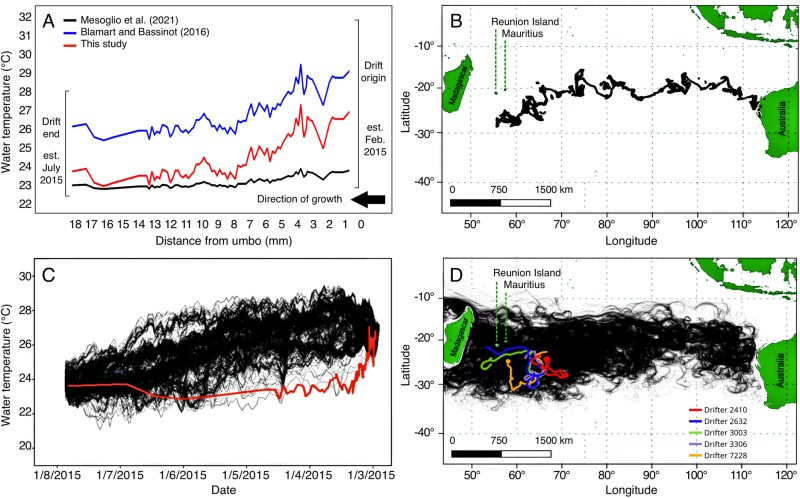
Grasping at (Very Scientific) Straws
It bears noting that these techniques aren’t the typical way that we hunt for crashed airliners. Normally, radar logs, transponder signals, and other data give us enough to go on to know where to look. In the case of MH370, much of that wasn’t available, meaning authorities and scientists had to get far more creative to hunt it down.
There are still some holes in the barnacle analysis as mentioned above. Plus, without access to all the barnacle evidence, researchers are naturally constrained. Ultimately, it’s an odd application of marine biology to try and solve an implacable mystery. It’s valid to try, but there’s no guarantee these small shelled organisms will turn up the plane that has so far proven impossible to find.
The ongoing investigation into MH370’s disappearance highlights the limitations and potential of using marine biology in solving such mysteries. Despite the advanced technologies and the novel application of biological data, significant gaps remain in our understanding of the debris’ drift patterns.
As researchers continue to study these marine organisms, the MH370 mystery underscores a broader truth: the ocean’s sheer size often defies our efforts to understand it. Trying to find a needle in a haystack would be a cinch by comparison.
Featured image: “Grand Canyon Sunset Through a de Havilland DHC-6 Twin Otter Airplane Cockpit” by Nan Palmero.















Bugs me that a single airplane was never found, while (most) ALL the others that ever crashed were rapidly found. Was that airplane chashed on purpose in a (previously studied) hard location to find?
Were those other planes in the middle of the Indian ocean
That is the point, we don’t know that
The biggest problem for me is that the blackbox has an ultrasonic and RF locator once in contact with water post-crash. They never picked up its signal before the battery ran out, so the was either ultra-deep or we searched way off the actual location.
Air France crashed in the middle of Atlantic between South America and Europe. The black box was finally recovered a few years later by luck.
The water in the Indian ocean is not the deepest, but it’s bloody deep.
https://www.lib.uchicago.edu/media/images/G9881_C2_1967_N3.original.jpg
it’s nearly 8,000m deep at the deepest areas. For reference, the black-box beacon is rated for about 4300m depth. There’s some assumptions about how the plane came down too. There may not be a coherent “crash site” that we’ll ever find, the debris field could have been a significant size by the time it hit the surface, and it would then be dispersed even more based on density as it settles and depending on the ocean currents.
Well, I’m not expert on airplane crash history, but I remember Air France 447, it crashed in the middle of the Atlantic, and it was found. So, if you know approximate location of the crash, it can be found even in the ocean.
That plane was following established route so it was somewhat easy to find it by following the path and accounting for underwater current drift. MH370 didn’t follow the path and wasn’t sending any signal so no one knows where it went other than somewhere west off Australia.
That was exactly my point in response to TG. If route is known, debris can easily be found even in the middle of the ocean.
AF447 was on the planned route. So there is just a line of places where it can be. Add to that they have long range radio to check in every now and then and that line is not even that long.
MH370 went off the planned route and seems to have cut off most if not all communications. So the uncertainty about its path and flight length are MUCH larger leading to a vastly larger search area.
Not ALL comm, the aircraft was reporting engine status on longwave comm. The triangulation of that data has proven to be misleading somewhat
you have got ro be joking.
“Bugs me that a single airplane was never found, while (most) ALL the others that ever crashed were rapidly found.”
Tell that to Amelia Earhart!
the big problem is that this is the first time that an airplane was (for how it seems) deliberately flown thousands of miles off course to an extremely remote region of the planet that air traffic normally doesn’t visit and that isn’t covered by any sort of surveillance. In most previous cases we had at least a rough idea of where the aircraft was headed and what route it was taking.
Yes. That is precisely what happened.
Having the barnacles growing on the bit that floats above the surface suggests that the whole tail section had initially sunk to the seafloor, experienced barnacle growth, and then disintegration three months later leading to the part surfacing and floating away.
This also could explain the unexpected age of them, as growth was stopped for the exposed ones.
Lots of holes in this theory, as i don’t have enough details about the state of the recovered barnacles (and neither do the researchers by the look of it).
.. or the part found was originally attached to something else that caused to float in a different way.
There are potentially any number of reasons why the barnacles are where they are.
It seems possible that the flapperon may have still been partly attached to the air filled wing it detached from for those 4 months. A wing that detached from the fuselage with enough bouyancy to be only slightly submerged would make sense. The Australian fisherman is reported to have claimed he found “the wing” 6-7 months after, and is still certain of it.
Those goose neck barnacles are inter-tidal. Their spat will only attach to a floating object or to rocks in the tidal zone.
Archaeologists can pinpoint the region of a land-based object or individual originated based on the isotope distributions in the sample. Are there similar isotope distributions in ocean water? If so, then layers of the shells could provide a diary of the barnacle location history. Even if the flaperon was stuck in shallow water where the barnacle attached and then released then to float away the attachment location might be identified.
The entire story (what is know at least) is fascinating. I think The Atlantic had a great article about a dude that went looking for the debris based on some crazy reconstruction of radar or radio data and actually that’s why he was looking at that place at all. Like literally walking down beaches looking for stuff. And found it!
There is also a whole huge part of the story about the Malasian government and airline hugely refusing to cooperate plus as alluded to above, the lack of usual telemetry data and all the not necessarily crazy conspiracy theories that fall out of that.
It’s been explored by several.
https://youtu.be/Y5K9HBiJpuk
Could it be possible to approximate the crash location by analyzing the barnacles’ DNA and comparing it with that of barnacles of different locations ? (I think the human prehistoric migrations were mapped that way).
Best regards,
A/P Daniel F. Larrosa
Montevideo – Uruguay
Built by Boeing… just saying…
What are you saying? That Boeing scratched around in the indian ocean until they found all the debris so no-one could tell how it crashed?
As we all know, flawed construction of an aircraft is the single greatest predictor of pilot behavior.
Yes, the pilot will take a sick note if he gets assigned to the plane with the bolts missing on the landing gear.
This also happens with natural phenomena like bird and fish kills which actually are fairly common events. When two or more happen to occur in close proximity in location and time it makes the national news at which point every journalism major starts looking for them and reporting them.
Are there really more things going wrong on airplanes?
Noticing more problems with Boeing planes doesn’t mean there are actually more problems with aviation safety.
Apr 19, 2024
https://www.vox.com/future-perfect/…irplane-crashes
Excerpts:
So what’s actually happening? Are more planes having incidents than ever before? Or are we just hearing about more incidents?
It’s mostly the latter. Minor aviation incidents with few or no injuries – like those listed above – happen constantly. They just don’t make the news.
So things aren’t going wrong on planes at an unusual rate – you’re hearing about it at an unusual rate because, ever since the January incident, journalists are paying much more attention and writing stories about relatively minor plane incidents, and people are nervous about planes and are eager to read stories about such incidents.
Various minor issues, from engine trouble to maintenance issues, were always happening under the radar but weren’t newsworthy; now, the same incidents are news, especially if they happen on a Boeing (and given that almost half of the US commercial fleet is made by Boeing, they often do).
Corrected link:
https://www.vox.com/future-perfect/2024/4/19/24134022/boeing-airplane-safety-aviation-door-plug-national-transportation-safety-board-airplane-crashes
The spontaneous disassembly of a large passenger aircraft is not a minor incident. Such major events were not happening frequently before 2024; your citation ignores the relative seriousness of the events. The missing bolts problem would have caused many more such incidents because inspection after the incident revealed that it was a common problem, and indicated a fairly new and systematic defect with Boeing and its subcontractors. The public perception is correct.
PLF101 also cannot be recovered, even though it crashed on land. It’s just the way things are sometimes.
Fascinating twist in the MH370 search! Using barnacles to pinpoint the crash site offers new hope for solving this long-standing aviation mystery.
TLDR
Only saw ‘barnacles are too small for time elapsed’.
Which I take as proof that the flight was highjacked by bigfoot, who was concealed in the electronics bay.
Flight sold to the reptilians.
Passengers eaten alive by Hillary Clinton.
Debris later scattered by Nessie’s Indian ocean cousin.
It’s the only reasonable explanation!
When all other possibilities are eliminated, what’s left is the truth of the matter.
The pilot was a flerfer and wanted to see what the Illuminati are hiding on the other side of the ice wall.
Any nobody interviewed the barnacles?
Oh no! Shoot! Guys, turn the official van around.
It may have drifted with a broken off wing for 4months then detached before the Aussie fisherman found that wing with his trawler.
The MH370 barnacle evidence reveals much more than an unfathomable mystery as described in the above “hack”, which is a rehash of the NYmag article it links. It’s based on old evidence. Buckle in for some historic context and new evidence.
When the MH370 flaperon was found at Reunion Island in 2015, it challenged all theories that the plane crashed anywhere other than the Southern Indian Ocean. Experts consulted in news reports noted that the barnacles expected to have originated from the active search area should be cold water species lepas australis. The first French report revealed they were temperate species lepas anatifera. The author also derived a new logarithmic growth formula and determined from the size of one large 35mm specimen that its age matched 474 days of growth beginning at the crash site. Author Jeff Wise consulted barnacle experts in 2015 who correctly estimated that the barnacles were much younger. JW leapt to the conclusion on his blog that the flaperon had therefore been planted as part of his conspiracy theory that MH370 had been electronically hijacked by Russians and flown north to a remote cosmodrome. Jeff Wise is incidentally a host of the Netflix MH370 series, the author of the above NYMag article, and also a 25+ episode podcast called MH370 Deep Dive with the stated purpose of presenting his case that MH370 went far north. He is the origin of the claims that the flaperon would not float in a way that barnacles would grow on the trailing edge, so therefore it was anchored and then planted.
Since the Hackaday article, proponents claiming MH370 was teleported have now adopted the barnacle evidence into their litany of proofs, based on unsound logic that the flaperon could not have drifted from a 7th Arc crash site to Reunion island in only four months. (?!)
JW was advised after his first podcast presentations on barnacles that the age may have been much shorter. He interviewed another barnacle expert who narrowed the age range to less than four months.
The key studies on the barnacle shells have been in determining the temperature of the waters where they grew. Both chemical and isotopic studies of the flaperon barnacles show that they began growth at the warm end of their reproductive range. The authors of those reports described that growth on the drifting debris would have begun within several hundred km east or NE of Reunion Island.
Since 2019, I have pointed out that this is the major barnacle paradox, which is impossible for a crash site in cold waters: https://370location.org/2019/02/a-consistent-mh370-waypoint-path-to-a-specific-7th-arc-location#consistency
The same week that the NYmag article hit the news, I released a report with new evidence on the barnacles: https://370location.org/2024/03/barnacle-growth-on-mh370-debris-is-consistent-with-a-7th-arc-crash-site-in-tropical-waters/
I review the attempted studies to connect drift to temperature, which were all tied to the false assumption that the barnacles were much older. Photometric analysis finds the largest barnacle on the flaperon was about 42 mm. Comparison with other studies still shows that the flaperon barnacles were approximately 1-2 months old.
The most important new evidence is that close examination of photos reveals that the young adult barnacles were growing atop damage that could only have come from beaching in shallow water. The damage includes abrasions to the flaperon leading edge that sanded down the screwheads and through the laminate. The foam+fabric seals are also worn to shreds, with barnacles on top. Therefore, the flaperon was immersed in the vicinity of Reunion Island for 1-2 months before it was found.
Further evidence is a very good match between the barnacle shell growth temperature and the actual austral winter sea surface temperatures near Reunion from June-July 2014.
This is disruptive to previous drift model projections that assumed the flaperon was discovered within days of its arrival at Reunion. CSIRO had concerns that simulated debris drifted too slowly to reach Reunion in 493 days. They tested a real flaperon and found its higher windage might just make it in time from the active search area. Shortening the transit by two months is again problematic for a cold water crash site. Assuming slower growth further shortens the transit time.
Only two other pieces had barnacles of 30+ documented SIO debris likely from MH370. One traveled fastest of all, being found on a South African beach in Dec 2015, where it reached colder waters. It is quite possible that none of the other found debris had no barnacle growth because it never left tropical waters.
A simulation was done of 87K CSIRO drift model particles starting near the 7th Arc that never entered waters along their paths cooler than 25C where the barnacles could grow. Only crash latitudes north of 21-22S could reach Reunion. Previous drift studies of MH370 debris drift in that range show a good likelihood of a crash site at 8.36S on the 7th Arc near Java.
Various past assessments of the barnacle evidence have generally dismissed it as either problematic or puzzling. Issues have been raised like unknown nutrition causing barnacles not to grow, or barnacles growing where they shouldn’t. The objections are undoubtedly made because the evidence doesn’t fit the assumptions behind a particular candidate site theory. The Java candidate on the other hand, fits all the hard evidence (drift, SATCOM, barnacle, fuel endurance, etc) with a flyable path, plus new acoustic evidence with a very specific epicenter. There were no previous searches of any kind within hundreds of miles, yet the seabed site could be searched on a detour expedition by any team with a modern submersible capable of 3,400m depth.
Pseudoscience, conspiracies, and unfounded speculation make for compelling stories, but have been less than helpful in finding MH370. That will be a “hack” worth writing about.
It’s no mystery they can’t find it. That because they are not searching at the right place. First, there isn’t any island called “Réunion”. There is one, called “La Réunion”. Then, it’s also possible the biggest barnacles were simply eaten by locals (French people eat mollusc). And finally, the most likely reason for such a large delta between the estimated route and the actual route without any emergency triggered is due to hijacking. In that case, it seems it didn’t go very well and the disappearance of the plane is likely a self destruct action where the plane (& pilots) didn’t try to be saved but instead probably dived the plane into the sea at maximum speed so it had no time to crash cleanly and sank directly to the sea floor
Evidence points to the pilot acting alone.
Don’t forget one of the main causes: fish strike in one of the engines.
The farthest southern reach of the possible track (fuelwise) means the flaperon could have started it’s sea voyage to ‘la reunion’ at a LEP near 42-44S/87-88E . A Mar16 2014 aust-global satellite photo at roughly 44S/91E still looks a lot like it could be an object like all or part of a wing heading east. Temperature would have been near 15C, the warmest time of the year.
If anyone was wondering, the cockpit picture here is a Twin Otter, one that comes before Viking retrofitted them with more modern avionics